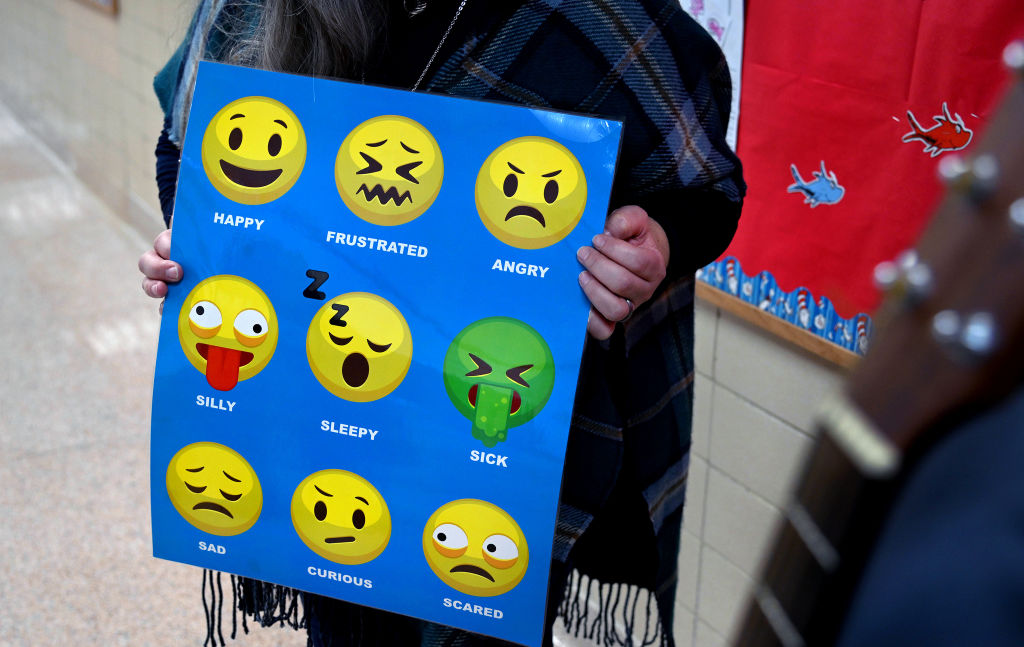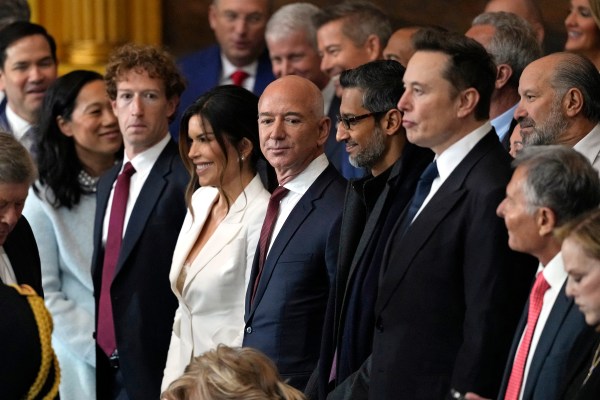Abigail Shrier does not write like a lawyer. Her prose is lively and occasionally laugh-out-loud funny. But her legal training—which includes a JD from Yale Law School—is on display once more in Bad Therapy, a wide-ranging criticism of the therapeutization of American childhood. That’s not to say that legal analysis plays any significant role in the book, but rather that Shrier has mastered the art of remaining disciplined enough to focus only on narrow, but readily defensible, claims regarding a highly charged topic.
Shrier doesn’t decry the practice of therapy wholesale. On the contrary, she credits cognitive behavioral therapy (CBT) as a real solution for individuals suffering from actual clinical mental health problems. Nor does Shrier engage the question of who or what might ultimately be at fault for our youth mental health crisis—though a close reading of her analysis suggests that she has a compelling answer.
Rather, Shrier urges Americans to reconsider whether it might be counterproductive or even dangerous for versions of talk therapy to have infiltrated the broader culture. Evidence that something isn’t right has been piling up: Youth anxiety and suicides continue to skyrocket, with the latter rising by 150 percent between 2009 and 2019, according to Shrier’s research—and that was before the COVID pandemic. Those are just two of a host of other mental-health adjacent crises, even as parents (who spend upwards of twice as much time with their kids than they did 50 years ago) and professionals monitor kids’ happiness at an unprecedented level.
What might explain this inverse correlation? Shrier levels two related criticisms. First, our children are suffering from too much therapy in non-traditional settings: school, home, social media, and even in the ambient culture. Untrained teachers, parents, and influencers mimic real therapy by pushing children to ruminate on their feelings, their relationships, and their frustrations. Second, and unsurprisingly, play-acting therapists do a bad job. They can interfere with healthy parent-child relationships. They often turn children into bullies by encouraging them to weaponize their “trauma” against friends who can be accused of being insufficiently sensitive. And in the worst cases, they inadvertently plant suicidal ideation in children who were not depressed—only the most dramatic of several potential iatrogenic (that is, practitioner-induced) harms.
Shrier largely relies on dissident parents, psychologists, and psychiatrists who have blown the whistle on toxic therapy’s metastasis. They warn, among other things, that school-based programs with nice-sounding names advance an unproven set of principles likely to stunt students’ acclimation to the real world. Social-Emotional Learning and “restorative justice,” two such programs, constitute little more than the “therapeutic approach” to recast “all bad behavior as a cry for help.” Under those banners, teachers (and “paraprofessionals” hired to monitor troubled kids) practice unlicensed therapy on all students by encouraging them to see themselves not as agents but as objects controlled by their diagnosed conditions—and every behavioral issue is now a diagnosed condition. Students are no longer pushed to transcend their academic, social, or behavioral challenges because the adults in the room are there to work things out.
The same pattern holds outside schools, where the trial-and-error process of growing up is sterilized and supervised under the guise of “gentle parenting” and similar attempts to—in psychologist Adam Mastroianni’s phrasing—reach kids’ brains through their ears. Past generations would work out childhood’s travails; now we talk them out. Rather than letting kids grow up by taking risks, learning lessons, and experiencing life’s ups and downs, our therapy culture assumes that we are better off using our words.
But providing children with constant prompts to talk about their feelings can be counterproductive in multiple ways. Psychologist Yulia Chentsova Dutton of the Culture and Emotions Lab at Georgetown University has concluded that “certain kinds of attention to emotions, focus on emotions, can increase emotional distress.” Encouraging our young people to see themselves as survivors of trauma makes them less resilient, reports eminent psychologist Elizabeth Loftus, not more. Ruminating on what bothers you, it turns out, is the best way to come to believe your life is defined by its challenges. Therapy is not for everyone—certainly not at all times and everywhere.
So the key question Shrier’s book raises by implication is: Why would anyone think it is? Therapy is an intervention, a response to restore the normal course of human life when things have gone off course. It’s not designed to be a norm or a default fixture of young people’s lives.
One reason therapy has spread is surely that many Westerners do not believe it comes with tradeoffs. This mindset of treating medical-ish interventions as unmitigated goods is surely widespread. The COVID pandemic revealed just how many people among us were willing to convince themselves and others that any and all interventions—school closures, mask mandates, and so on—were worthwhile when faced with one salient threat. Similarly, many seem to be in denial that talk therapy could have downsides.
Perhaps that is because therapy’s counterproductive elements suggest that something is quite wrong with the culture that has taken root in the West. If therapy can harm because it encourages what psychologists call “state-orientation”—focusing on how you are, as opposed to action-oriented or what you can do—perhaps our culture of expressive individualism, which holds that one’s goal in life is to achieve acceptance and celebration for who you are, is itself toxic. If focusing on oneself rather than serving others actually makes us miserable, maybe loosening the traditional unchosen bonds of marriage and child-rearing isn’t liberating us, but enslaving us to our ruminations.
It is hard to argue with Shrier’s explicit conclusions, which are few but still controversial: Raising resilient kids requires letting them be kids, getting out of the way and letting them experience non-catastrophic failures. When we do talk about feelings, it’s important to talk about channeling those feelings toward empowerment, action, and service to others. In other words, take a dose of CBT and detox from mass-produced talk therapy.But the brilliance of this book—really, the genius of Shrier attacking this topic—is its implicit upshot, which takes the form not of whistleblowing but social criticism. What is the real panacea for our therapy culture? The traditional centers of action-orientation and other-direction, which constantly make demands of our time and require us to subordinate ourselves to the needs of others. Religion, work, and the nuclear family are the three that spring to mind. They are anti-therapeutic, but, as ample evidence testifies, strongly correlate with happiness. Shrier is too disciplined to say so outright, but her gripe is, fundamentally, with a progressive social culture that is making us—especially the young among us—sick.







Please note that we at The Dispatch hold ourselves, our work, and our commenters to a higher standard than other places on the internet. We welcome comments that foster genuine debate or discussion—including comments critical of us or our work—but responses that include ad hominem attacks on fellow Dispatch members or are intended to stoke fear and anger may be moderated.
With your membership, you only have the ability to comment on The Morning Dispatch articles. Consider upgrading to join the conversation everywhere.